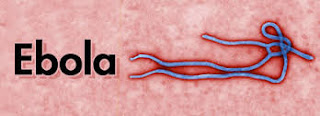الرئيسيةالصحةملفات ومقالات
How is Ebola transmitted? This is how you get Ebola, as explained by science
Unlike the common ailments that afflict human beings like flu or measles, Ebola’s transmission does not occur through the air. The disease is transferred if there is direct contact with various bodily fluids of an infected patient. Direct contact denotes fluids touching eyes, wounds, cut, opened skin or mouth, the disease is neither airborne nor does it spread by liquids like water. In this vein, the body fluids which spread Ebola’s virus include various secretions like saliva, urine semen, sweat, stool, mucus, breast milk, and breast milk.
Handshakes
Shaking hands with a patient would unleash minimal risks; however, body fluids may exacerbate the conditions. Skin contact is not solely risky devoid of fluids. Patients become contagious if they are sick with symptoms. And at that juncture, the patients are hardly outdoors as they are very sick.
Surfaces
If you touch a surface that was in contact with a patient, contamination depends on the duration. The virus only survives few hours on surfaces, once it is desiccated, it is dead. Nevertheless, you can kill the virus using home-based bleach or organic sanitizers. On the other hand, if in body fluids, the viruses may stay alive at normal temperature while semen enables it to survive for a few months.
Coughs and Sneezes
First and foremost, if the victim is symptomatic, chances of viral transmission through a cough or sneeze are heightened. If they literally sneeze on an uninfected person, the contagion is communicable. Finally, the fluids in the cough like mucus and saliva if they land on eyes, nose, mouth or wounds; it is transmittable at that point. Coughs and sneezes do not suffice as symptomatic indications of the disease. Health experts have predicated the virus is wimpy and is poised to die if outside the body like the HIV/AIDS virus.
Animals and Organisms
Unlike the anopheles mosquito that spreads malaria, the virus does not have a microorganism that furthers or spreads it. However, various species like bats alongside monkeys have been identified as potential carriers.
Health Care Workers
Hospitals and quarantine areas where the patients of Ebola are restricted may pose a threat to the workers. Thus, needles and tools contaminated with the virus may suffuse the contagion, meticulous approach is imperative for doctors, nurses and co-workers in these settings. To keep the virus at bay, hospital staff should wear masks, protect eyes and gloves.
Medical equipment ought to be sterilized painstaking before re-use. Similarly, if not properly disposed, the virus can be communicable and amplify the outbreak.
Erstwhile Patients
When a patient infected with Ebola has convalesced fully, they cannot transfer the virus. Nevertheless, health experts have discovered the virus survives in semen for up to three months. Discernibly, abstaining from sex for not less than three months is recommended. Nevertheless, where abstinence is impossible, condoms are crucial to militate against spreading Ebola viruses.
In the view of the probable modes of transmission, body fluids of infected persons when in contact with uninfected people are the principal cause.





